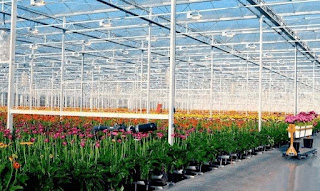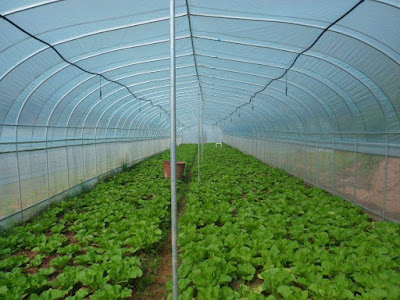The importance of greenhouses in flower production
The importance of greenhouses to flower production has long been known to cultivators. Using greenhouses to cultivate flowers can not only effectively control environmental factors such as temperature, light, humidity, carbon dioxide concentration, and produce high-quality flower products, but also break the seasonal restrictions on flower growth. , to reach the anniversary of production and supply of flowers. In addition, for those flowers that are not suitable for local cultivation, greenhouse facilities can also be used to create suitable environmental conditions for introduction and cultivation. The use of modern greenhouses with various environmental control equipment can maintain a good microclimate environment inside the greenhouse, so that the flowers grow well and have high quality. Israel is because of its advanced greenhouse facilities and spray and drip irrigation technology, which makes export flower products have high market competitiveness.
Nowadays, the role and status of greenhouse facilities in human economic life are becoming more and more obvious. Take Colombian roses as an example, because the atmospheric temperature is too low for more than two months in winter every year, and there are occasional periods when the temperature is too high in summer. Often there is a gap in rose production at these two times of the year. Although it has more than 20 years of cultivation experience, due to the unstable quality and yield of roses, the market during this season has been gradually captured by Ecuador. Therefore, Colombia has to pay attention to the development of facility planting, and constantly develop new greenhouses and supporting facilities. Take international potted flowers as an example, whether it is Canada, the United States or the Nordic countries Denmark and Norway with a cold climate, Colombia and Mexico with a warm climate in Central and South America, Kenya and Zimbabwe in African countries, and even Japan, and Southeast Asia. In Korea and other countries, in order to obtain higher economic benefits, greenhouse facilities are widely used to produce commercial flowers.
It can be said that greenhouses have become a prerequisite for the development of the flower industry. Without advanced greenhouse facilities, it is difficult to produce high-quality potted flowers.
Looking back at the development history of China's flower industry, it can be clearly seen that it is closely related to facility agriculture. The rapid rise of the flower industry in the past 20 years is exactly the 20 years of the rapid development of China's greenhouse industry. The rise of the flower industry in northern China just confirms the importance of modern greenhouse technology for flower production. It is also the widespread promotion of greenhouses that makes New Year's Eve flowers no longer the patent of Cantonese people, but has become a nationwide concept of flower sales time. There are four seasons. Therefore, in order to better develop the flower industry, we must not only rely on the progress of science and technology and the improvement of management level, but also rely on and utilize greenhouse facilities well.
Flower production is increasingly integrated with greenhouses
With the continuous development of the international flower industry and the continuous improvement of modernization and specialization, the combination of flower production and greenhouses has become more and more closely, and the proportion of the facility cultivation area in the world's major flower power plants is also increasing.
As the world's largest flower production and sales country, the Netherlands has a greenhouse area of 10,905 hectares, including 4,047 hectares of cut flowers and 1,467 hectares of potted plants, more than 97% of which are Venlo-type glass greenhouses. , fertilizer, gas comprehensive automatic control. The flower industry can create a value of 3 billion euros every year, accounting for half of the total Dutch horticultural output; its flower exports account for 60% of the global market share. With the development of large-scale operation and the change of market positioning, the output value of flowers will further increase. In other countries such as Germany and Israel, 80% to 90% of potted flowers are cultivated and produced in modern greenhouses.
The import and export of flowers in China is also increasing year by year. At present, the total production area of flowers is 334,000 hectares, and the production area of flower facilities (heated greenhouses, solar greenhouses, and plastic sheds) is 47,000 hectares; Nearly 20 billion qualified seedlings were produced. Due to the limited land area, the major cities in the country for flower production have vigorously developed facility cultivation to obtain maximum profits. Taking Beijing as an example, in recent years, flower circulation and sales have grown rapidly. There are 21 flower sales markets with an area of more than 5,000 square meters, occupying 15 hectares of greenhouse area, accounting for 13% of the total greenhouse area; 55% of large greenhouses are used for flower planting and breeding. , renting and the expansion of flowers, forestry, seedlings. Experts predict that during the "Eleventh Five-Year Plan" period, Beijing's large greenhouses will maintain an annual growth rate of 8 to 10 hectares, while the newly built greenhouses are mainly used for the production of flowers and forestry seedlings, high-end potted flowers and fresh cut flowers.
These all reflect the increasingly close integration of greenhouse facilities with the flower industry. It can be said that the development and growth of the flower industry in a country and region is more and more inseparable from the use of modern greenhouses.





